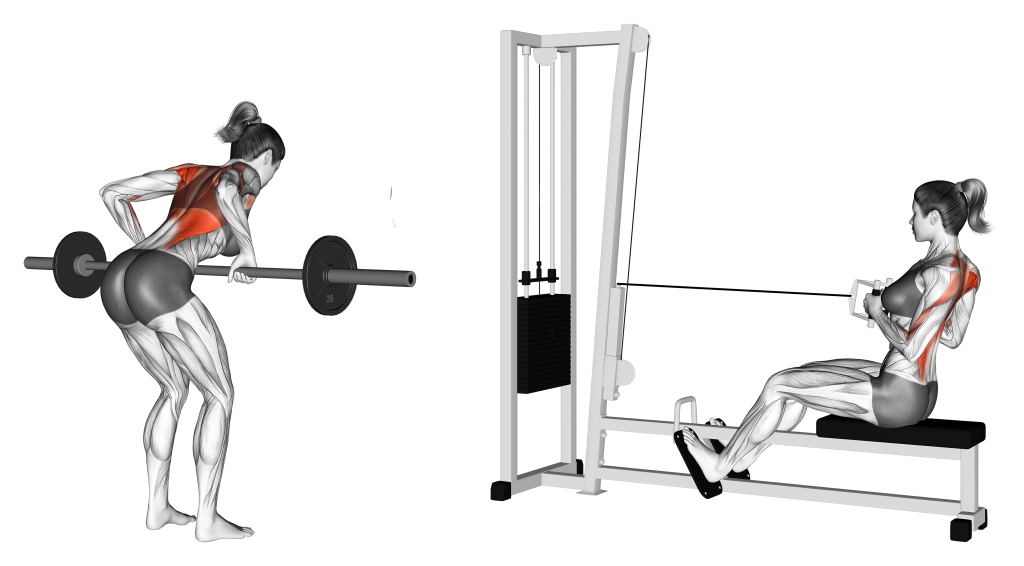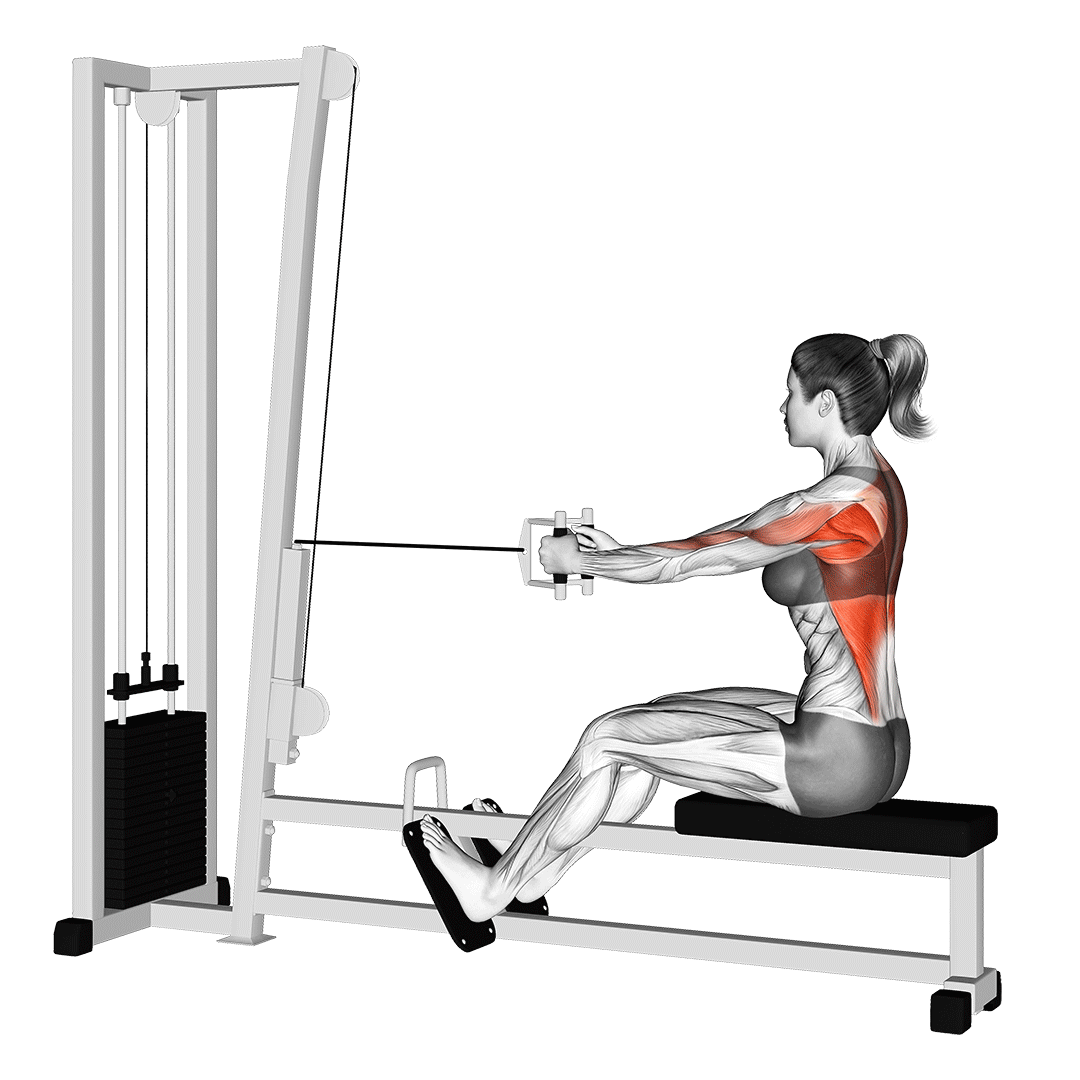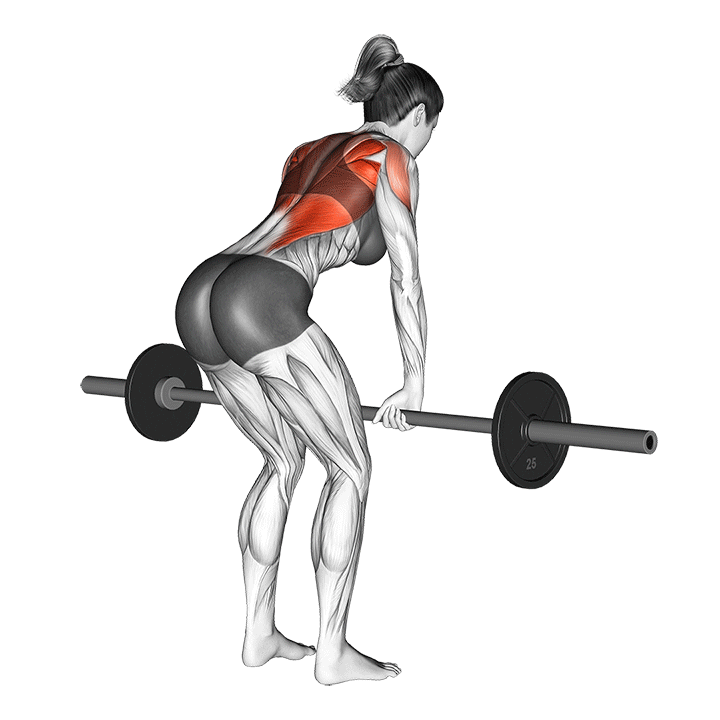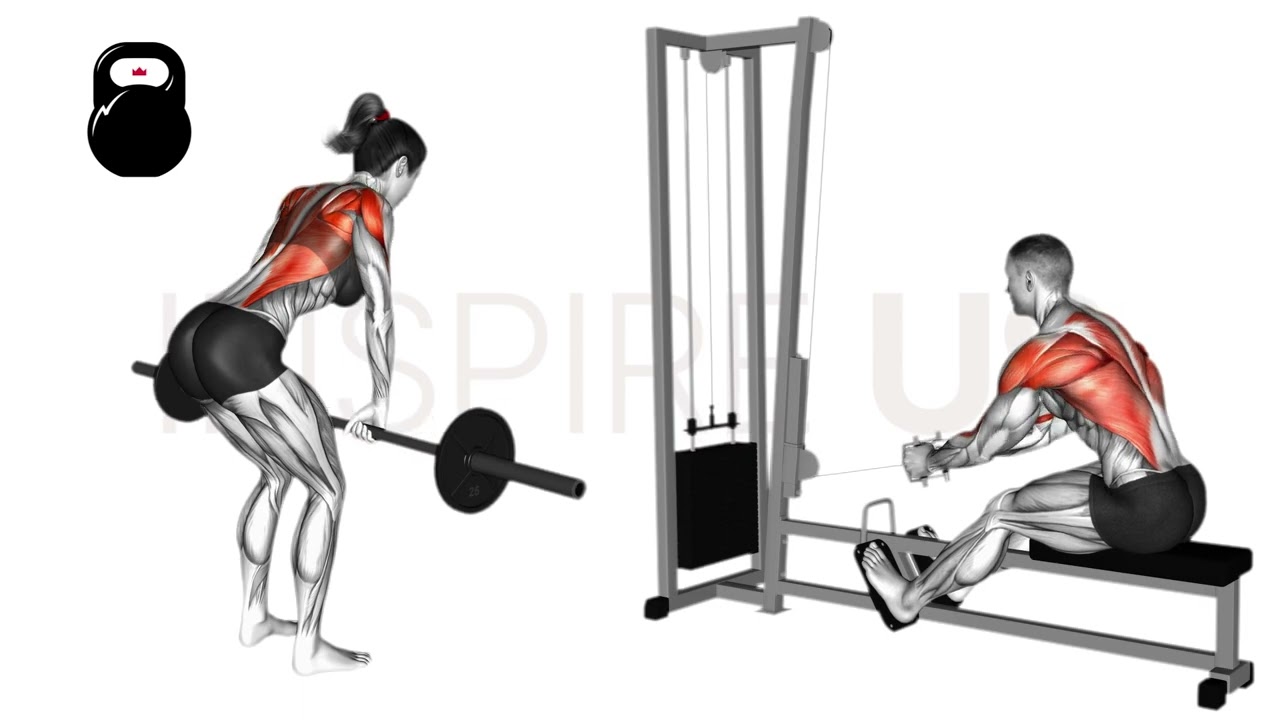Seated Row vs Bent Over Row: Differences Explained
Apart from simply being performed in entirely different positions, the seated row and bent-over row will also differ in terms of:
- Stabilizer muscle recruitment
- Intensity of contraction
- Relative injury risk
Seated vs Bent-Over Row: Stabilizer Involvement and Muscular Emphasis
The main mechanical point of distinction between the seated and bent-over row is the involvement of the lower back.

Because the latter is performed with the trunk hinged forwards, the erector spinae, core and other lower back musculature are all recruited in an isometric capacity.
This contraction is otherwise absent with the machine seated row.
Seated Row Variable Emphasis
Furthermore, depending on the specific grip and machine used, seated rows may create a greater emphasis on the upper back muscles than would be possible with a traditional bent-over row.

A higher angle of resistance (achieved by adjusting the machine) or using a closer and more supinated grip will shift some emphasis away from the middle-back muscular emphasis that is inherent to the bent-over row.
Seated vs Bent-Over Row: Safety and Mechanics
Apart from targeting different secondary muscle groups, both variations of row also feature distinctions in safety, mechanics and the actual stance used.
Relative Safety Differences
Because the bent-over row places the lower back and spine in a relatively more compromised position than the seated row, those susceptible to injuries to these areas should opt for the seated row instead.

Lower back positioning notwithstanding, the adjustability and self-stabilization inherent to the machine-based nature of the seated row make it an overall safer exercise in all aspects.
For novices or individuals just returning to training after an injury, beginning with seated rows may be a better option.
Main Mechanical Differences
Though both the bent-over row and seated row are horizontal pulling movements, the bent-over row allows for a greater range of motion of both the scapula and the arms.
In addition, the positioning of the trunk during a seated row may allow lifters to “cheat” the repetition by leaning the trunk back - something that is far more difficult to unconsciously achieve when in a bent over position.
Seated vs Bent-Over Row: Applicability and Functionality
Finally - tallying up the various differences in the seated and bent-over row allow us to define where they are most effective.
Which Row is Better for Bodybuilding and Hypertrophy?
Optimizing resistance training for hypertrophy requires a focus on full ranges of motion, consistent tension during the eccentric and a somewhat higher range of repetitions per set.
Though the seated row occasionally features a shorter ROM than the bent-over row, it is nonetheless far better for achieving muscular hypertrophy due to its self-stabilizing nature and lack of lower back involvement.
These characteristics allow for more isolation of the back and higher repetition volumes without limiting factors like lower back fatigue or increased injury risk.
Which Row Builds More Strength and Power?
Across the board, the bent-over row is not only more true to real life movement, but also significantly more demanding of the entire back.
In comparison, the seated row is self-stabilizing, limited in its scope and a somewhat easier movement to perform.
So - for building back strength and gross pulling power, the bent-over row is the undeniably better choice.
Which Row is Better for Newbies?
Though both exercises are relatively safe when performed with proper form, the seated row is a more novice-friendly exercise simply because it does not require being in a hinged position throughout each set.
Which Variation of Row is Best?
While it will depend entirely on your training goals, the bent-over row is a “better” exercise than the seated row for general muscular development.
To get the benefits of both, perform bent-over rows as your primary movement while lining the seated row up as your secondary compound exercise.
References
1. CRONIN, JOHN B.; JONES, JULIAN V.; HAGSTROM, JOHN T.. KINEMATICS AND KINETICS OF THE SEATED ROW AND IMPLICATIONS FOR CONDITIONING. Journal of Strength and Conditioning Research 21(4):p 1265-1270, November 2007.

